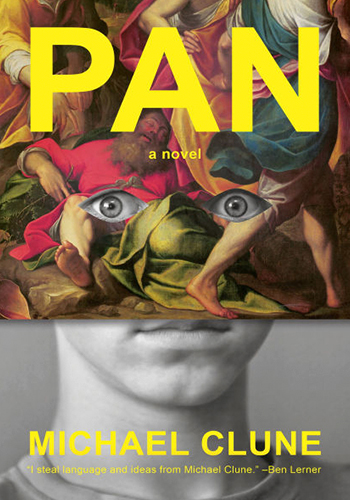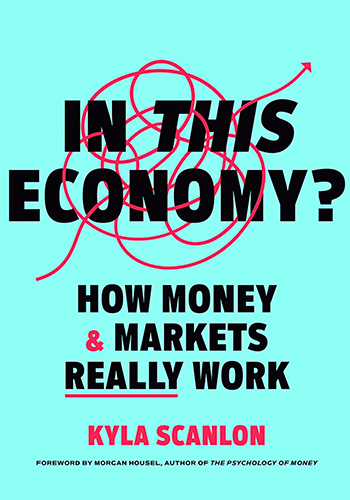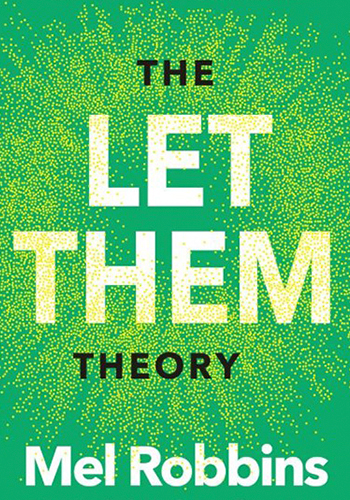Lorem ipsum odor amet, consectetuer adipiscing elit. Purus dignissim tortor nibh conubia montes taciti rhoncus convallis massa. Finibus parturient arcu mollis urna; laoreet dui nisl mauris malesuada. Neque diam nostra potenti purus congue lobortis tortor. Orci sem eget porta sodales taciti taciti ligula porttitor. Dignissim netus porta tortor tristique velit efficitur suspendisse litora. Sodales purus magna eget euismod suscipit lacus fermentum.
Updated : Sunday, 10/22 @ 21:22
2025 Running Total : (5)
Pan – Michael Clune (2025)

This book got me to do many things extracurricular to actually reading a book; I read the complete Wikipedia entry for Oscar Wilde. I listened to the entirety of Boston’s debut album including three listens of ‘More Than a Feeling’. I Googled “Stalin’s daughter Beria photograph” and that was definitely worth the effort. I listened to Sir Neville Marriner’s recording of J.S. Bach’s Orchestral Suites 1-4. And of course I did a deep dive into the Greek satyr-god Pan, who it turns out, lorded over the wild, shepherds and flocks. Sounds like a ride right? It was, it takes a unique author to weave all these ideas together, and Clune IS such an author, even if the ending here was more ephemeral than matter-of-fact, but that just speaks to my personal taste, I’m sure most will be satisfied.
One thing that struck me were the utterly ordinary names the author picked for all of his characters, almost like he didn’t want names to get in the way of the narrative in any way; Sarah, Tod, Ty, Larry, Keith, Ian, Carl, Steph… nothing to see here.
The story begins when high school freshman Nick, not really a protagonist per se, but certainly the main character in the book, first starts to experience panic attacks. He and his best friend Ty, generally not that popular in school, see their entire outlook change when more popular classmate Tod invites them to hang out at The Barn, an outbuilding on the property of his families affluent residence. Once there, Nick and Ty find a loose collection of their classmates as well as Tod’s college attending and semi-psychotic brother Ian.
In summary, not wanting to give anything away, Ian and Nick deal with similar mental health issues which both are trying to define and get control of, albeit in fantastically different ways. For Nick, multiple theories come and go over the two years the book spans along with varying levels of success in controlling symptoms. While Ian believes he’s farther down the road of understanding and tries to impose his will upon Nick and his understanding.
Being honest, there are a couple of scenarios that the author never gives resolution to, and that bothered me a little. Truth is though, resolution to those happenings didn’t have any real affect on the main thrust of the narrative, so it wasn’t a deal breaker, but if you re-read my first paragraph here again, the author spent a lot of time building an interesting world for these high schoolers to inhabit and some of what doesn’t end up happening leaves much of that world unresolved.
In This Economy? – Kyla Scanlon (2024)

Got turned onto this one when author Kyla Scanlon appeared as a guest on The Daily Show to talk about it. She described it as a primer on how (mostly) the US Economy functions written in a (mostly) non-technical language to make things as understandable as possible to the layman. When it comes to the economy, I AM the layman, so I bounced over to my local library and looked it up. They didn’t have it, so I put in a request for them to buy it, which they did and made me the first patron to get to read it. Big shout out to the Arlington Heights Memorial Library, the very best library I’ve ever encountered in my long history of library patronage.
This book lays it all out. It gets started by examining what Scanlon describes as The Vibe Economy, which describes the phenomena where sometimes, it doesn’t really matter the actual state of the economy… but rather, how people feel about how the economy is going. This theory really seems to ring true with the general post-Covid state of things.
It goes on to answer so many questions you may have asked yourself over the years; How banks operate, how they can fail. How the US dollar became the standard on which the global economy is based. Supply, demand and the importance of supply chains to economies rising and falling. Imports, exports and a thorough explanation of GDP. Commodities like oil, metals and renewables and their effects on the economy. Fantastic primers on Inflation, Recession, the Labor Market, the Housing Market, the Stock & Bond Markets as well as an introduction to Cryptocurrency and AI.
In the books final section Scanlon gets into how money moves; Fiscal Policy, Monetary Policy and then a complete and pretty entertaining overview of The Federal Reserve; How it started, how it works and an analysis of what she calls ‘The Fed’s Narrative’, which is to say the story they try and tell to assuage the aforementioned downturns in The Vibe Economy. She also defines the differences between classical economics and some of the new theories that are now being employed. And Scanlon finishes by itemizing problems as well as opportunities in the context of where we find ourselves at the time of publishing.
The one thing missing? Well that would be tariffs. Which I’m sure is a topic that many a layman would like to better understand. The omission makes sense in the context of the book being published before Trump turned the word tariff into an every day occurrence, however haven’t tariff’s always been part of the conversation when talking about economies?
One way or another, this book is a great read if for no other reason than to leave it feeling like you have a better understanding of how the world around you is working in the fiscal sense. I wouldn’t recommend it for the beach, but all other settings in which you find yourself reading… it’s a go.
The Let Them Theory – Mel Robbins (2024)

I’m not gonna talk a lot about this book because it clearly falls into the ‘self-help’ genre that typically holds almost no interest to me. It’s not a boast to say I find little need for self-help tomes, but rather, I’m grateful to have developed as a human in a manner that has very little need for them, almost all of the time, common sense gets me to where I need to be.
That said, a couple of factors coincided that brought me to the table. First, I was told by two unrelated friends (who had read this book) that they thought of me a couple times while reading it as it struck them that I naturally employed the techniques that Mel Robbins espouses within the “Let Them” theory. Second, the author was a guest host on the Pivot podcast that I listen to regularly and listening to her speak, she struck me as a bit aggressive and over-bearing in conversation which for some strange reason, sealed the deal on whether I would give her book a spin. If my friends thought I naturally employed her theories, I was curious to find out her take on what to me is just simply common sense.
The basic idea is as humans within society, we should all be most focused on that which we CAN control as opposed to that which we CAN’T, this in the service of reducing anxiety, anxiousness perhaps even depression. Stop comparing yourself to other people, release the grip of people’s expectations, pursue what truly matters to you with confidence, stop wasting energy on things you can’t control… and in the event that society inflicts any of this negativity upon you, let them.
Part two of the Let Them Theory is “Let Me” which Robbins defines as what you do AFTER you “Let Them”. For instance, a friend group that you’ve fallen out of contact with of late has a group activity together posting pictures of the happy event on social media. Your initial reaction is to feel left out, your feelings are hurt. Robbins suggests that you let it go, you “Let Them” do that thing… and then the “Let Me” part is perhaps realizing that your old friend group didn’t do this to you intentionally but rather, you’ve fallen out of touch. So “Let Me” is to maybe reach out and re-establish those friendships if the desire is to be included moving forward.
See what I mean? Common sense. At least to me. But listen, if you’re the sort of person that finds yourself losing time worrying about aspects of life that are beyond your control; things others think, things other say, things others do… then give this one a read, can’t hurt. There’s also in-depth sections on applying the “Let Them” Theory to relationships and parenting, both topics inapplicable to me so I just skimmed over them. So final thought… this one wasn’t for me, but it could be for you.
Fall or, Dodge In Hell – Neal Stephenson (2019)

Recurring character and (sort of) protagonist Richard “Dodge” Forthrast begins this tale by… dying. Having made billions through the IP of a video game he created, Dodge dabbled in some of that billionaire shit. In this case, a will that directed that upon his death, his body was to be cryogenically preserved until which time technology had advanced to the point where his remains could be scanned and digitized, creating an assemblage of data called a connectome.
Jumping ahead, Dodge’s Great Niece Sophia, 4 years old at the time of his death, found herself a doctoral student at Princeton focused on the particulars of spawning her Great Uncle Richard’s connectome to a cloud-cluster of servers with the intention of igniting life beyond physical death. The hope being, Dodge’s connectome would achieve some level of consciousness and become the first human soul to embody their singular mind space in this nascent digital afterlife.
With this premise established, the story evolves from there as after a period of seeming infinite loops, Dodge’s brain/connectome eventually finds its bearings, achieves consciousness and begins to define the lay of the land within this new world. In Stephenson’s brilliant storytelling, things take on the air of Genesis in that it’s a god-like manner that the building of the world plays out. The narrative within this creation period creates a visceral experience like few others.
And then there’s Elmo Shepherd. While Dodge was still alive, Shepherd was the billionaire that got him to agree to have his brain scanned upon his death. Elmo Shepherd is a character that focuses all his worldly wealth towards the goal of the digital afterlife. He plays a huge role in financing the project and has very specific ideas on how it should be structured, however Dodge gets there first and figures things out, lays out the world along with his own version of a hierarchy. Suffice to say, Elmo Shepherd doesn’t agree with Dodge’s approach
In the end, not wanting to spoil anything, you’ll find the classic battle, good versus evil… and that’s at the conclusion of a Quest, a Quest made up of numerous unique characters that you get to know and love, which was very reminiscent of The Lord of the Rings in more than one way.
The span of time that elapses over the course of this book feels to be about 80 years. From a science fiction point-of-view, the planet Earth sees extraordinary advances in technology over this period, so much so, that I wouldn’t think the start of the book could be our own present day, although I’d say it’s close. At any rate, be forewarned, this book is 880 pages long, because that’s how long it takes to tell this story, which is Stephenson’s MO, most all of his books are longer than average. I wouldn’t recommend it as a vacation book though, too heavy to travel with. That said, the lion share of the final two-thirds of the book is watching this world evolve, and it’s fascinating. Provides many moments where you’ll put the book down for a while and just start expanding about this or that idea being pondered in the narrative.
Worth reading? I’d say definitely, but then, Stephenson has emerged as my very favorite author, so I’m biased.
1984 – George Orwell (1948)

I, like many, first read this book in high school. What’s funny about that for me was that first read came in the actual year 1984, which was my senior year, 36 years after the book was originally published. I suppose to Orwell, that must have felt like a sufficient jump into the future to make the dystopian world he describes possible. He was a bit off with that guess, but here in 2025, the Doomsday Clock is at 89 seconds to midnight, as close as it has ever been.
If I’m being honest, it was Trump’s first week back in office that caused me to hunt down my copy from the archives. When it comes to the world transitioning from one state of being to another completely different social order, I give this idea more and more thought these days. How would it happen? For my money, the Covid pandemic acted as a sort of proof-of-concept, which is to say, how fast our daily routines can upend and become something different. What makes me uneasy is how globalization, Moore’s Law (enabling AI advances) and the ubiquity of the internet, namely social media, seem to be conspiring to take the world down a path that will ultimately become a different reality for what it feels like to live on Planet Earth.
The mid-section of this book is the part that still threatens to be possible in the years ahead. This is the part of the book where you get to read a portion of the treatise written by Emmanuel Goldstein, the supposed leader of the Brotherhood, a secret organization opposing the Party and Big Brother. The treatise is titled The Theory and Practice of Oligarchical Collectivism (wiki) and critiques the Party’s rule, explains the principles of ‘perpetual war’, the manipulation of truth and then describes how the hierarchical structure of society is designed to keep the ‘Party’ perpetually in power.
Writing this here in the first months of the second Trump Administration, a change in leadership that came into office with a furious issuing of proclamations and executive orders, creating a chaos not previously seen and showing no signs of relenting, one can’t help but wonder… to what end? What are they looking to accomplish in the long term? Sort of an out of body experience reading it as your mind reconciles the words you’re taking in with the current reality of our surrounding here in the United States.
So maybe revisiting this book at this particular moment wasn’t the best decision as my anxiety levels have certainly been tweaked a bit upwards, but who knows? Trump may decide to BAN this book tomorrow or the day after. Get it while it’s hot.




